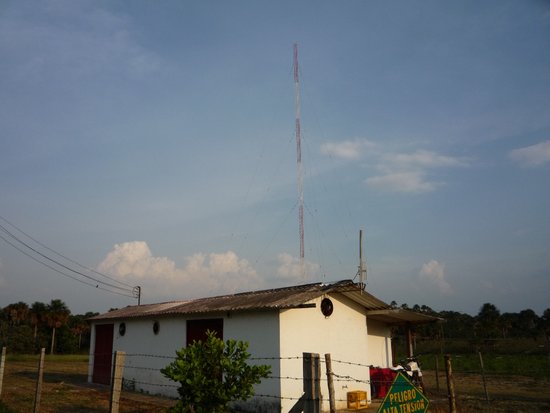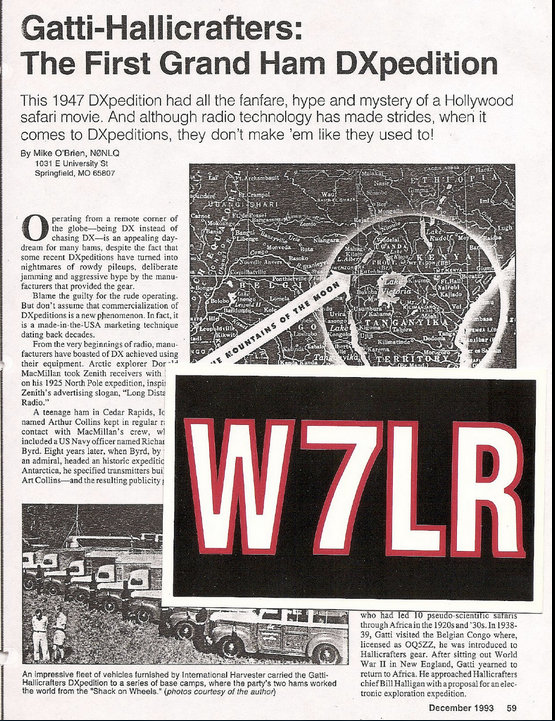 Many thanks to TheGreekRadio.com for commenting with details about the August 12 closure of VOA’s Greek language service and allowing the following article to be republished on the SWLing Post:
Many thanks to TheGreekRadio.com for commenting with details about the August 12 closure of VOA’s Greek language service and allowing the following article to be republished on the SWLing Post:
End of an era: The Greek Service of the Voice of America ceases operations
The end of operation of the Greek Service of VOA (Voice of America) after 72 years was announced yesterday by the radio network. The decision was taken due to cuts in the budget allocated for the operation of the news organization, but also due to the effort to use the broadcaster for the diplomatic needs of the United States. The last show will be aired Tuesday morning via satellite and it will be relayed to Greece by Skai Radio and City 106,1 in Thessaloniki. The first broadcast of the Voice of America, the official foreign-language radio in the United States was the February 1, 1942 in German with the announcer WIlliam Harlan Hale. The Greek was one of the 25 languages of the first network and airs on November 1, 1942.
The history of the Greek service
The presence of the Voice of America was very evident in the Greek territory, as the giant of American propaganda during the Cold War had settled in Greece, two of the most powerful transmitters in order to broadcast to Eastern Europe.
The radio transmitters of the Voice of America settled in Greece after the civil war, as part of the implementation of the Truman Doctrine. Then, the American state sent to Greece a set of equipment, “to facilitate the Greek Institute of Radio”, but which was used extensively for broadcasts programs from Washington. The first equipment arrived in 1949, and included a medium wave transmitter WESTERN ELECTRIC 50 KW and four shortwave transmitters COLLINS 30 KW, placed by the Voice of America in Perea Thessaloniki, by providing facilities for radio broadcast abroad: ‘Voice of homeland “of E.I.R (later the 5th of ERA). Also, the Voice of America originally had a floating the radio station on the medium wave powered 150 KW, aboard a ship called Courier, which was anchored in Rhodes and had its antenna mounted on a balcony.
The almost arbitrary installations of radio transmitters legalized later by a series of agreements between the American and the Greek Government and the relocation of equipment in Rhodes (Koskinous, Sgouros, Afandou), Xanthi (Dasochori) and Kavala (Agiasma). The last two agreements in 1997 and 2002, under which the American service undertook the responsibility to provide technical assistance and equipment (transmitters medium and short) to the Greek Radio. The transmitters in the Greek area set off in 2006, as part of policy to reduce shortwave. Then it was considered that the Greek stops as well, but the reactions of Greek-American associations eventually blocked the decision and the Greek radio program continued to broadcast via satellite, internet and FM stations as relayed by the Sky and the City International.
In 2006, despite the fact that the Voice of America left behind two very powerful transmitters, which could be used by the Greek Radio, eventually due to high maintenance cost , the broadcasting sites remained inoperative. Indeed, a few months ago, the abandoned facilities of the Voice of America in Xanthi to contain dangerous materials for the environment.
Readers: please contact me if you are able to record this final broadcast as I would like to add it to the Shortwave Radio Audio Archive.
Again, our thanks to TheGreekRadio.com who publishes news about all aspects of Greek radio on their site. Please check it out!









